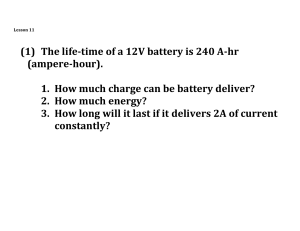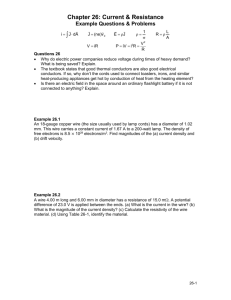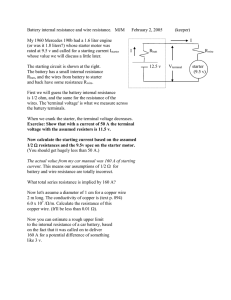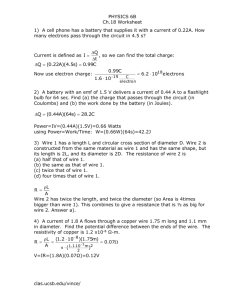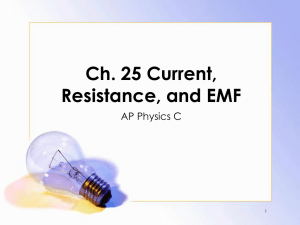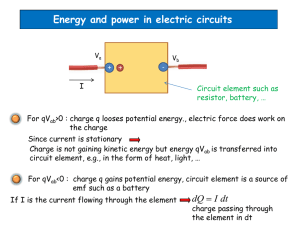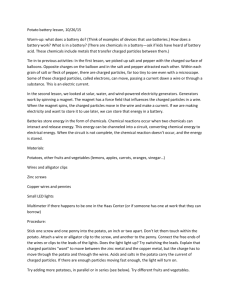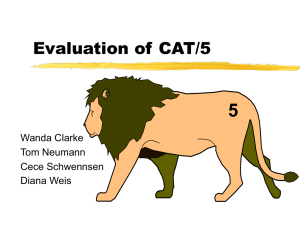Physics 112 HW#2 - University of St. Thomas
advertisement
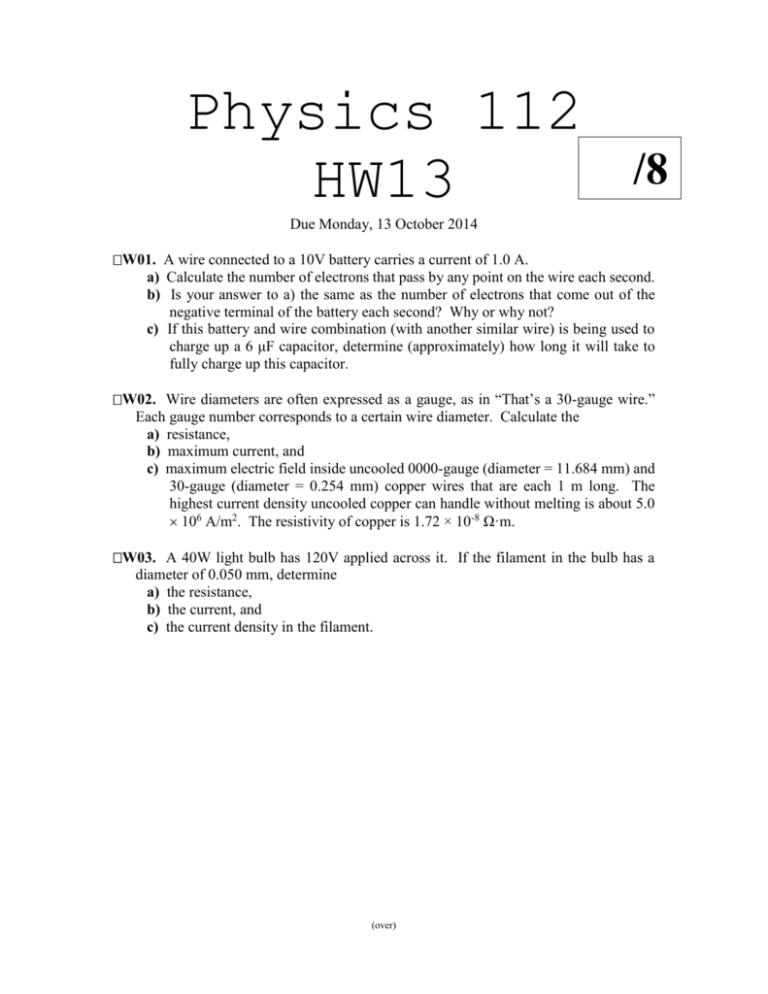
Physics 112 HW13 /8 Due Monday, 13 October 2014 W01. A wire connected to a 10V battery carries a current of 1.0 A. a) Calculate the number of electrons that pass by any point on the wire each second. b) Is your answer to a) the same as the number of electrons that come out of the negative terminal of the battery each second? Why or why not? c) If this battery and wire combination (with another similar wire) is being used to charge up a 6 μF capacitor, determine (approximately) how long it will take to fully charge up this capacitor. W02. Wire diameters are often expressed as a gauge, as in “That’s a 30-gauge wire.” Each gauge number corresponds to a certain wire diameter. Calculate the a) resistance, b) maximum current, and c) maximum electric field inside uncooled 0000-gauge (diameter = 11.684 mm) and 30-gauge (diameter = 0.254 mm) copper wires that are each 1 m long. The highest current density uncooled copper can handle without melting is about 5.0 106 A/m2. The resistivity of copper is 1.72 × 10-8 Ω·m. W03. A 40W light bulb has 120V applied across it. If the filament in the bulb has a diameter of 0.050 mm, determine a) the resistance, b) the current, and c) the current density in the filament. (over) W04. (Wolfson, Ch. 24 Problem 40) A piece of copper wire joins a piece of aluminum wire whose diameter is twice that of the copper. The same current flows in both wires. The density of conduction electrons in copper is 8.87 1028 per m3 and that for aluminum is 16.93 1028 per m3. Compare (a) the drift speeds and (b) the current densities in each. W05. (Wolfson, Ch. 24 Problem 58—get out those integration skills?) A metal bar has a rectangular cross section 5.0 cm by 10 cm, as shown in the diagram at right. The bar has a nonuniform conductivity, ranging from zero at the bottom to a maximum at the top. As a result, the current density increases linearly from zero at the bottom to 0.10 A/cm2 at the top. What is the total current in the bar? 5.0 cm J = 0.10 A/cm2 10.0 cm P01. A 50 kΩ resistor is connected to a 10 volt battery. Determine J=0 a) the current through and b) the power dissipated in the resistor. c) The resistor is replaced by one with 25 kΩ resistance. How much power is dissipated now? P02. (Wolfson, Ch. 24 Problem 57) A 240-V electric motor (DC) is 90% efficient, meaning that 90% of the energy supplied to it ends up as mechanical work. If the motor lifts a 200-N weight at 3.1 m/s, how much current does it draw? P03. Your best friend loans you her new Jaguar for a weekend. Unfortunately, you leave it parked by the curb for two hours with the lights on. a) How much battery energy was used up if the headlights draw 2A of current and the battery’s voltage (like nearly all car battery voltages) is 12 volts? b) If the battery is rated at 20 Ampere-hours (I think that is realistic—most batteries don’t give you this information), how long would it have to sit outside with the lights on before the battery goes dead? c) How much chemical potential energy was stored in the battery when it was freshly charged up? (over)
